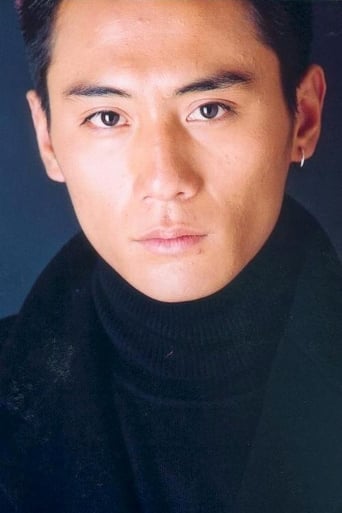Fairaher
The film makes a home in your brain and the only cure is to see it again.
Invaderbank
The film creates a perfect balance between action and depth of basic needs, in the midst of an infertile atmosphere.
Aneesa Wardle
The story, direction, characters, and writing/dialogue is akin to taking a tranquilizer shot to the neck, but everything else was so well done.
Derrick Gibbons
An old-fashioned movie made with new-fashioned finesse.
Jeremy Zhang
Film title: Nanking! Nanking Director: Chuan Lu Year of release: 2009 Before I saw the film "Nanking! Nanking", I have already watched some of the movies made back in the 80's/90's about the rape of Nanking. They are exploitation movies and never affected me or leave me with profound experience. I'm actually disgusted with them making such movies. Also most of the documentaries I watched never really do anything. But when I watched the movie "Nanking! Nanking!" directed by Chuan Lu, it really drained me emotionally. When I first time watched the movie in cinema, it shocked me. And I think Chuan Lu is a pretty courageous and a respected director. I need to explain the reason why he is a courageous and respected director. At the first of the film, the lens showed us broken fences of Nanking, and the city was full of the dense smoke. The images made audience feel repression. But it is just a beginning. When we move on with the film, we would find that there are just two colors for the film, black and white. Maybe most of the audiences will doubt that if there is a problem of the film. Why it is not in color. But audiences will agree with the color soon. There is no more other color can fit this history than black and white. It is one of the reasons that why I think Chuan Lu is a courageous director. He used the black and white to explain the war. It is pallid and helpless. We can really feel the depressive emotion, which was brought from the color of the movie. And the most difference between "Nanking! Nanking!" and other same theme movies is the position of the director. Most of the directors add their own emotion to their film, so that they try to put up the good side of Chinese soldiers into the film and forget the bad side. And they also vilify Japanese soldiers from everywhere in order to accuse Japan and vent their emotion. It is easy to lead audiences' emotion. But people always forget the real part. "Nanking! Nanking!" is the different one. Chuan Lu didn't use the Chinese soldiers or Chinese people as the mainline of the movie. He was talking about the rape of Nanking through a Japanese soldier's view. Maybe it was also not the real image of the event, but I can feel that it would be the image, which was the most close to the real. Chuan Lu is very audacious on this. He didn't stand on the position of Chinese people. He filmed the movie in neutrality. I also saw some comments of this movie online. Most people said that the description of Japanese soldiers was humanness in the movie, even though the movie showed the vulnerable side of Japanese soldiers. People cannot understand that with nation hatred. They think Japanese soldiers should be the totally devil in the rape of Nanking. So there were a lot of voice of censure on the comments of the film and the director. But in fact, we cannot lose our mind because of the nation hatred between China and Japan. We need to face the truth and we need to see the depth effects of the war. Of course, we can forget the nation hatred. But we also have to accept that Japanese armies are not the real devil. In this film, Chuan Lu tried to stand on a middle position to state the rape of Nanking. So we can feel that the whole movie is very repression but rationality. Chuan Lu is a courageous director, and he is also very respected. The movie stated the rape of Nanking. But it is not in order to lead off emotion of nation hatred. It is a warning to Chinese people, and also the whole world. It is not simply a movie for Chinese people to deepen their hates on Japanese; it is a movie for people all over the world to see, to experience and to explore what Japanese have done to Nanking in 1937, and what the war has bring to us. This movie was shot without hates without slants without sharp emotions. But the images always warn us that war is the real devil in the world. I can remember that when I came out from the cinema after the movie, the first feeling was that how good is the current world in peace. And I think that peace is the main theme of the movie, not hatred. And the movie has demonstrated the most powerful thing in the world: no matter Japanese admit the fault or not, we may forgive, but never forget.
badajoz-1
The film is a documentary-style retelling and visualisation of the events that made up the 'Rape of Nanking.' The city of Nanking was the Chinese capital in 1937, and was captured during the Sino-Japanese War by the Japanese. What followed was a well-observed series of atrocities committed by the conquerors against the native Chinese population. This movie looks predominantly at the fate that befell the refugees who gathered in an International Safe Zone, supposedly protected by international guarentees. The Japanese army systematically hunts down and murders Chinese army personnel, machine gunning or burning them alive - the imagery of such events is incredibly chilling and poignant. Then the occupiers start chipping away at the Zone, finally extracting women to become 'Comfort Women' for serial rape over three weeks by the Japanese army by threats. Nothing is portrayed too full frontal, but those who die on the job are slung onto carts without pity, thought or clothes! Yes, some of the images are extremely powerful and make 'Schindler's List' as a movie look more like a Teddy Bear's picnic ( not the subject matter, of course). Characters who are highlighted gradually succumb to death in one way or another in the randomised violence by those who have total power over others. One survives, care of one sympathetic Japanese soldier, who commits suicide for letting a boy go, and life is seen to go. Powerful and gripping - those who complain are just being pernickety. Because, of course it is only a partial view of what went on overall in Nanking in 1937 - let's face it we did not piles of emaciated bodies being buried with tractors in 'Schindler's List,' did we?
eatfirst
There are a rare few films that have found a way to tackle some of the greatest atrocities ever committed by and upon the human race with such searing, unflinching emotional honesty that they move beyond the categorisations of drama or war movie to something that can best be described as bearing witness. Come And See and Schindler's List belong to this exclusive group, and so too now must Lu Chuan's extraordinary and harrowing City Of Life And Death.It is 1937 in Nanking, former Chinese capital and scene of what is about to unfold as one of the greatest war-crimes in history (a massacre verging on genocide and an event which continues to sour Sino-Japanese relations to this day), but writer/director Lu Chuan is not here to analyse wider military events or stratagems. We open with the briefest glimpse of the Japanese assault on the city walls, and then before the credits have even finished rolling his camera is already patrolling the post-conflict city streets; a blasted, ruined landscape. His film picks up where the likes of The Pianist or Saving Private Ryan leave off, in the midst of a destroyed world, with the invaders and the surviving remnants of the defeated population already pitched together in a dangerous and disorientating mix of sporadic resistance battles, vast wretched prisoner encampments and perilously tenuous civilian "safety" zones.Events are told in a masterful inter-cutting of macro and micro drama. We are introduced to only a handful of identifiable characters. Amongst them a Chinese bureaucrat trying to use his position to save his family, a young boy caught up in the resistance fighting, a naive prostitute (euphemistically referred to as comfort girls), one of thousands shipped to the front-line with no idea of the horrors awaiting them, and a single Japanese soldier with some semblance of conscience amongst his savage comrades. Their desperate personal stories intertwine inside the maelstrom of chaos and horror surrounding them.The stunning black-and-white photography veers from stark, hand-held and up-close, to vast and impressionistic sweeps that depict the large-scale massacres as nightmarish visions of some biblical apocalypse. The combined effect renders the feel of the movie as both something close to a rediscovered contemporary document and personal witness testimony, the small-scale drama illuminating the large-scale atrocity that might be beyond comprehension otherwise.At times heart-stopping in its intensity and tragic almost beyond expressing. City Of Life And Death is a profoundly moving depiction of inhumanity at its most grievous. It simply should be seen.
poe426
Having just recently subjected myself to the almost documentary-like horrors of the Russian film COME AND SEE (about as sobering an experience as can be had), I opted to push my luck and try CITY OF LIFE AND DEATH. I've seen a number of documentaries regarding Japan's invasion of China, so I knew what to expect (although I DIDN'T expect the opening scenes, which harked back to the gritty, hand-held carnage of SAVING PRIVATE RYAN). In fact, CITY OF LIFE AND DEATH is actually more than a little forgiving in some of its depictions: characters who may or may not have been as sympathetic to the "lesser beings" are given the benefit of the doubt (no doubt by way of presenting a more "balanced" view of rape and wholesale slaughter). (Note: in one documentary I saw, a recaptured prisoner in a Nazi concentration camp was hung for all to see and a note was pinned to his chest: "I'm back," it read. And you thought the Nazis had no sense of humor...)





